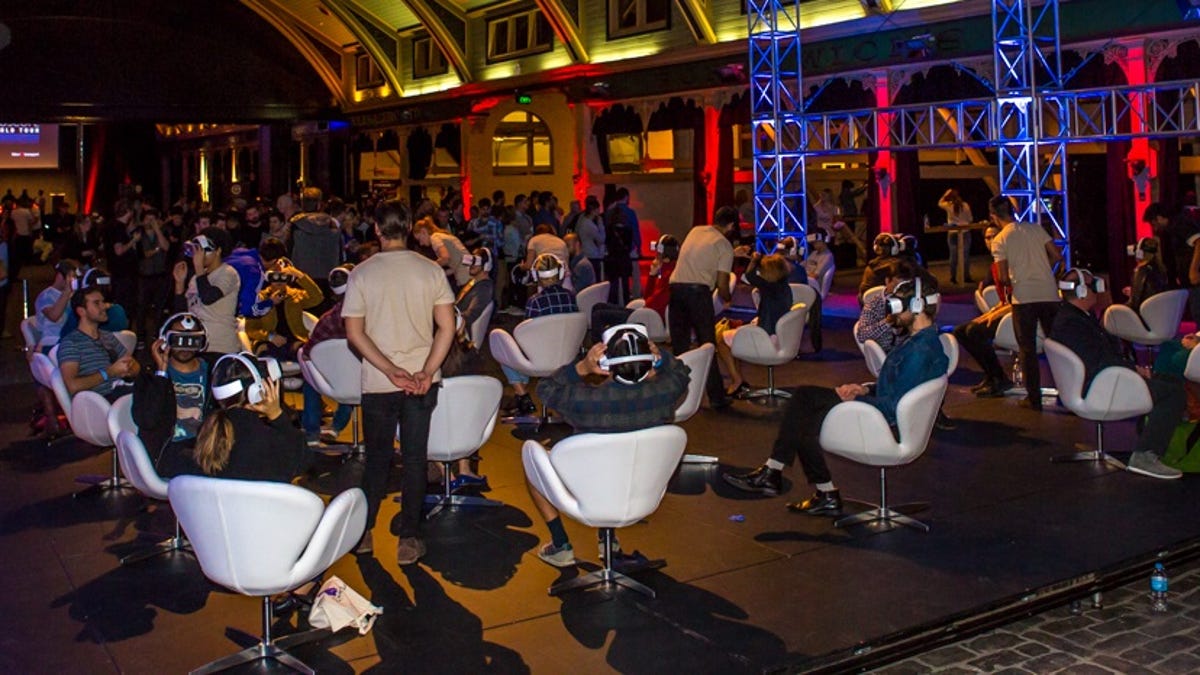Kaleidoscope festival is a whirl through virtual reality
With tour dates around the world, the festival shows off the best VR experiences for the HTC Vive, Oculus Rift, Samsung Gear VR and more.

Billing itself as a showcase for "the best in virtual reality film, art, and immersive experiences", the Kaleidoscope World Tour is the VR equivalent of a travelling film festival.
After starting in Paris last month, the showcase embarked on a whistle-stop tour of the world: 10 cities in just 42 days. It wrapped up in Melbourne, Australia, where I got to have a look at some of the 30-plus experiences on offer.
Kaleidoscope is not only the name of the festival, it's a community of visual artists, developers, filmmakers and anyone else working on VR experiences. Nick Ochoa is the global VR evangelist for Kaleisoscope, a role that also seems to include a lot of community wrangling.
"We noticed the compelling VR content that we were seeing was being done by small groups of talented artists, just like us," said Ochoa. "So we decided that we wanted to be a studio for these artists and we want to bring these artists in. That's Kaleidoscope, really. It's not just us but all the artists in our community who work with us to build projects, to create things."
For the most part, Kaleidoscope offered short, 360-degree video experiences. There's an argument to be made that VR and 360-degree video need to be differently defined, that true virtual reality should be interactive rather than passive. You're welcome to make that argument, but I think that boat has sailed for VR purists.
"We're here to celebrate the pioneers," said Ochoa. "People aren't making money on this yet. It's financed by artists themselves with their blood, sweat and tears."
With only a few hours and limited VR headsets, I didn't get to watch everything. But there were some big standouts from what I did see.
Now imagine this in VR.
The first is "Mad God" on the Oculus Rift, directed by Phil Tippet. I'm sorry, I mean Oscar winner Phil Tippett. He shared in the Visual Effects Academy Awards for both "Return of the Jedi" and "Jurassic Park". It's a surrealistic, stop-motion animated experience that is enhanced by a haptic feedback vest. The vest provides physical vibration for some of the more kinetic effects and basso profundo sounds.
It's the first time I've tried this sort of haptic feedback in VR, and it's frankly amazing. It adds an extra layer and makes the two-minute long "Mad God" into something almost overwhelming.
"Tana Pura" was another standout. Experienced via the Samsung Gear VR, "Tana Pura" is initially a seemingly random display of shapes and colours, all set to a score from Radiohead's Jonny Greenwood. It's directed by Mike Tucker, who works at secretive startup Magic Leap, adding an air of mystery to the film. (Magic Leap is working on a "mixed reality" project that's been valued at US$4.5 billion, despite no one quite knowing what they do.)
It's based, in part, on the Tibetan Book of the Dead and is intended to represent the soul's journey in the afterlife. It's also subtly interactive, changing depending on your head movements. It doesn't have the punch of "Mad God", but I found myself reflecting on it later that night...and for a while afterwards.
Colosse from Joseph Chen.
A final experience that made an impression is "Colosse", from Joseph Chen. Like "Tana Pura", it has some small interactivity based on the Gear VR's head tracking, but the story is more narrative. It also has wonderful stylised art and an Arctic colour scheme that I really enjoyed.
With themes of power, fear and perhaps even greed, it comes across like a modern telling of an ancient legend, with a rather disquieting ending that's almost at odds with the gentle art style.
It's a little odd to see just how much intriguing work was on display, given that the majority of the content was made during what Ochoa calls "the dev-kit era", before the commercial availability of VR hardware.
"The tools and the distribution platforms and the things that are going to support the VR market are being created right now," said Ochoa. "So what's going to happen once they are out, once people have time with them? I'm just really excited to see what happens next year".

